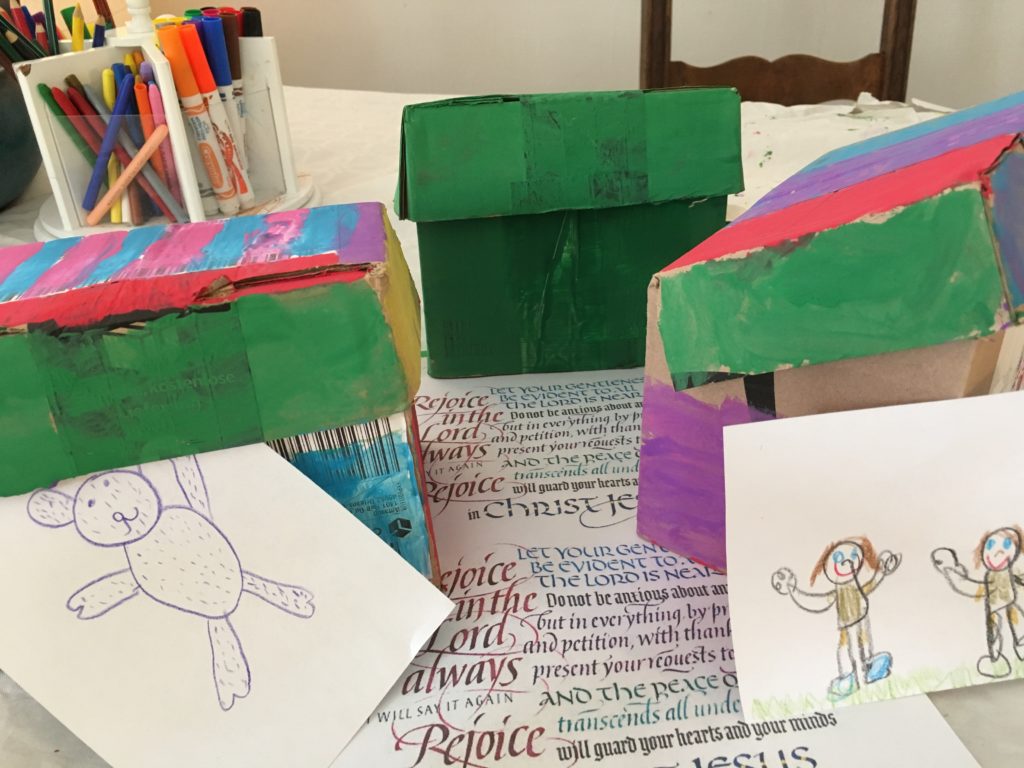The Story of a Night
She appeared at the top of the stairs. Again.
“What is it this time?” I sighed. Achy bones? Water? Noises?
“I just can’t sleep.” In fact, she had a habit of choosing not to sleep, but she couldn’t see that.
“Can we do the worry box?” She asks climbing across her bed to reach for the box.
“Sure. What’s on your mind,” I extend, ready to try anything that might lead to sleep.
And she proceeded to tell me a long twisted story about how the girls in the schoolyard were trying to upset her and then they went to her best friend and spread nasty rumors in her name. The girl in turn got upset and hurt someone else, and so on, and the whole thing snowballed until the entire class was distraught and all blaming her. She didn’t know what hit her. (*Incidentally this story would be corroborated by the best friend when she talked it over with her mom that night and realized it was all hearsay concocted by gals that were up to no good.)
We’ve all been there. Bombarded by life’s events we can’t still our brains nor do we want to let go and sleep without making things right.
Three hours had gone by and she had stuffed it, filled her time with business to avoid the problem. Unbeknownst to me.
I met her at the school gate asking, “Hi sweetie. How was your day?” She responded with, “Good.” I want more than that, so I always ask follow up questions, “Really? Are you sure?” But she was still thinking she could get away without talking about this one.
Until she tried to sleep.
She had the box open and was pulling out the previous slips one at a time. “Not a worry. — Not a worry. — Not a worry.” None of those trivial concerns like a spider biting her in the middle of the night, could hold a candle to this, the first real worry of the school year.
She drew a picture of her best friend mad at her and when that was complete I prompted, “What would you do if your best friend does get mad at you again?”
We had already talked this through a little bit. “I should talk to her,” she answered, satisfied, and wrote that on the slip.
It was too late to call, but she wrote her friend a letter snapped a picture of it and sent it so that it would be waiting for her in the morning.
She packed her new, solitary, worry slip into the worry box and pulled the blanket up and fell straight to sleep.
The Divine Purpose of Worry
Worry Boxes are not magical. This is not sorcery. They don’t always produce the same outcome.
The very next night I received some disturbing news right before bed. I didn’t have much time to process before I was lying wide awake in the dark.
My eyes were closed, but my mind was thinking.
My first wave of thoughts were all about how to prevent my fears from coming true. But after a while I starting looking at all the angles that I would be okay even if the worst case scenario happened.
Then, mysteriously, my mind sorted all that I had heard and aligned the order in the chaos.
Eternal truths started glaring at me. Old truths, repackaged to speak to my own situation.
“No decision made in fear has ever lead to peace.”
I slept soundly the rest of the night, and every night since.
Sometimes worry serves a purpose. If we enter into the process it will teach us about ourselves, about our creator and about trust. It will also bring clarity as it shines a light on those basic human needs that we are lacking.
Build a Worry Box
A tool to visualize laying ourr burdens at Jesus’ feet.
1.) Decorate a shoe box to feel cozy, confortable, safe and strong.
2.) Write or draw your worry on a slip of paper.
3.) Write or draw what you would do if your worry came true.
4.) Place the worry in the box and ask Jesus to take care of it while you sleep.
5.) Review the worry box occasionally to determine whether the existing slips are still worries, or whether new things should be added.
Two Life Transformative Outcomes:
First, without knowing it, we literally participate in making an action plan for what to do to confront harsh realities. This drains the power of the fear that grips them and builds confidence that God will see them through no matter what.
Second, over time we see that they have survived many fears and are not preoccupied with the same things. Faith exercised in the small things is practice for faith needed in the big things later in life.
A Trusted Tool
Objective experience would suggest that worry boxes are effective 80% of the time.
If the majority of our everyday worries will respond to this concrete exercise then it can’t hurt to give it a try.
Talk to your doctor if your worries are beyond what you can handle.
A Place of Non-judgement
When a loved one confides their worry in us, we take them at their word.
We avoid saying, “You shouldn’t be worried about that.” or “That would never happen.”
We give them the time and respect to write what is on their heart. It is not our place to decide whether they are worried about something or to judge whether they should be.
We validate their stories by teaching them rich vocabulary that expresses each emotion as they arise, not only so that they can articulate themselves better, but also because the simple revelation “There’s a word for that,” also communicates, “You are not alone.”
Only they can determine when they’ve outgrown a worry and remove it from the box on their own. Be patient. It’s a beautiful thing to watch.
Be as graceful with yourself as you would be if you were advising your best friend.



What a great idea…and your little cupcake is soooooo precious…!! God bless you all..!